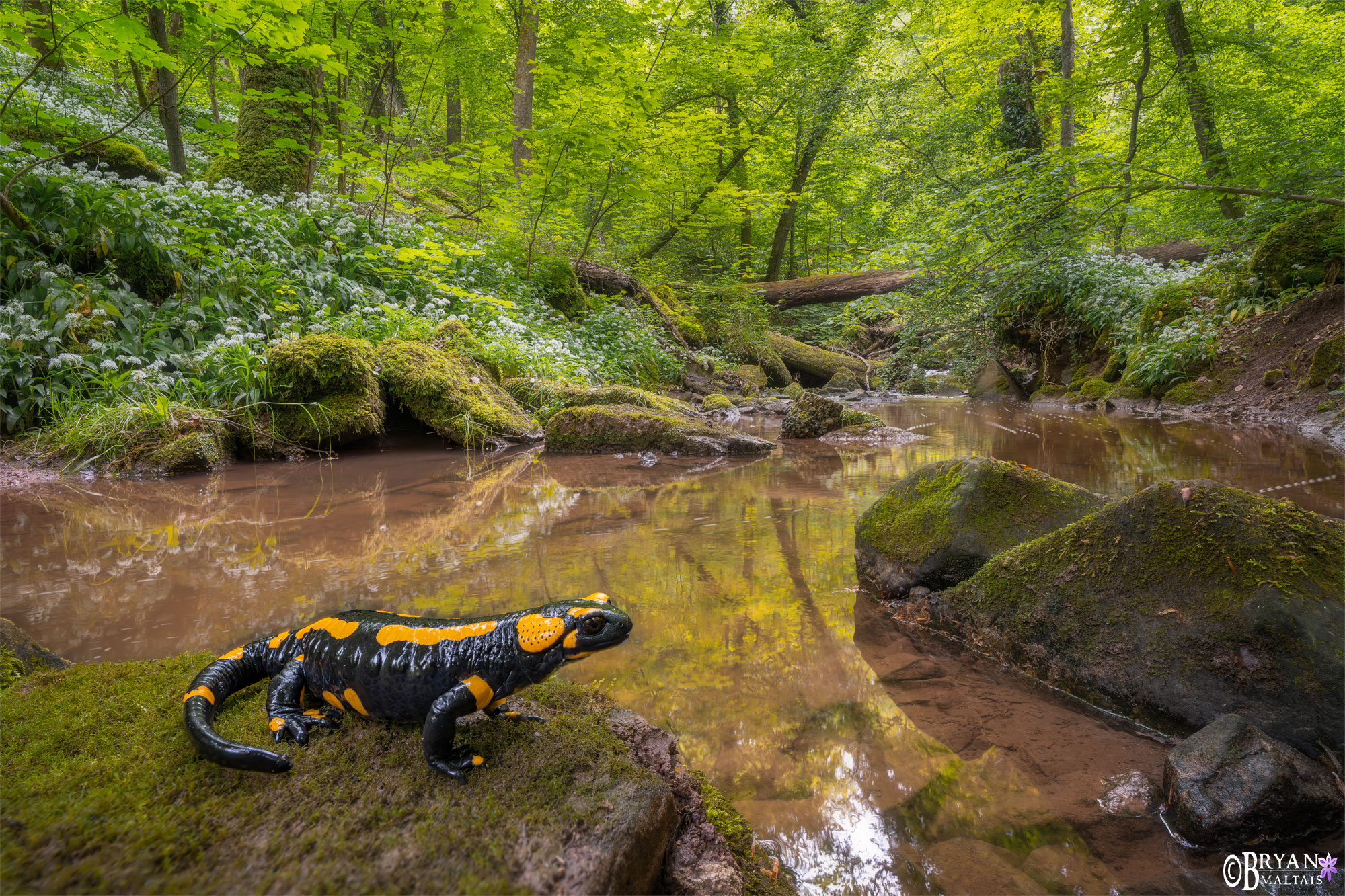I photographed this Fire Salamander in a small forest near Stuttgart, Baden-Württemberg, Germany in May 2023. It’s a good photo to break down the technique used because it was technically challenging to create. It’s also personally meaningful because each element within the photo is among my most treasured things; home, forest, water and animal.
I previsualized this image before I took it by imagining the most beautiful scene possible based on the natural features available to me in the region. I’ve visited this forest many times before and knew it had everything that I needed to create this picture. I wanted the final image to contain elements that conveyed Fire Salamander ecology and the serenity of a European forest in spring. The white flowers with green foliage covering the hillsides are Bärlauch (Wild Garlic). They’re indicative of ideal Fire Salamander habitat and bloom during the Salamanders’ peak spawning period. The stream is a powerful feature that evokes tranquility and is where Fire Salamanders spawn. Unlike most Salamanders that lay eggs, Fire Salamanders bear developed larvae that have already hatched within the mother. While most German forests are logged and pruned of dead wood, this one is left to grow naturally with fallen trees left where they lay. This let me include trunks criss-crossing the forest to impart an old-growth vibe. Bringing this vision to fruition was just a matter of scouting the brook until I found a spot where these elements congealed.
I wanted everything from front to back to be in focus because each element is important for the narrative. I used focus stacking to achieve this because a single photo lacks the required depth of field to capture both a close foreground subject and the background in sharp focus. Focus stacking is when you take 1 photo for each slice of focus and then merge them into a single composite where every part of the photo has fine detail. It took 52 photos to cover everything from front to back. I merged the final image using Zerene Stacker. A deep focus stack like this one isn’t always ideal, but worked in this case because the featureless stream behind the fire salamander created good separation between subject and background.
I was able to take 52 shots in rapid succession before the salamander wandered off because my Sony A7r V performs automatic, in-lens focus stacking. This is a feature that’s becoming more common and will probably be standard on all ILC’s soon. In the “olden days” I had to focus stack manually by mounting my camera to a geared focus rail and painstakingly dialing the camera forward for each shot. This would have taken minutes, not seconds, and been impossible to achieve with a live Salamander.
Even with automatic focus stacking, everything in the composition must remain still for the 20 or so seconds that it takes, otherwise the images won’t align properly. For the highest chance of success, I first composed the shot so it was ready and waiting and then placed the salamander in the frame. I searched the forest until I found a large female with a calm demeanor. They’re still common enough that I could confidentally set up the shot knowing that I’d find one. As much as I strive for completely natural photos, it would have been a miracle to find a Salamander perfectly posed like this in broad daylight.

